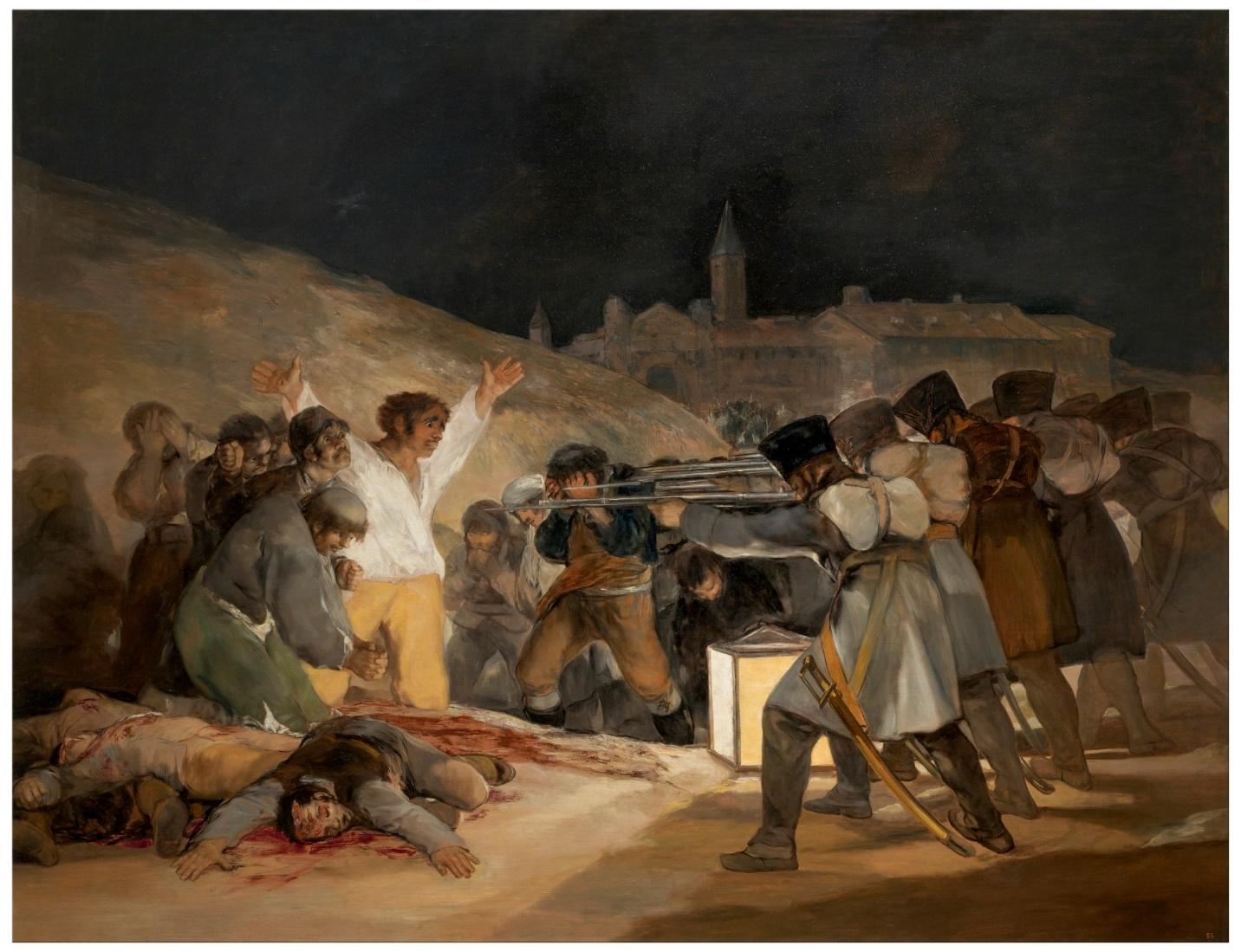The first selected cultural artifact is the poem “The Colonel” by Carolyn Forché. It was written in El Salvador in 1978 in the middle of a civil war between the US-backed military and government on the one side and the Foarabundo Martí National Liberation Front on the other side. The second chosen artwork is the painting entitled “The 3rd of May 1808” by Francisco Goya (see Figure 1). It was created in 1814, commissioned by the provisional government, and designed to commemorate the Spanish resistance to the occupation by Napoleon’s army. The painting is now located in the Museo del Prado, Madrid.

Common Theme
The common theme shared by the two works is the brutality of war. In “The Colonel,” Forché (1978) hints at war right at the beginning of the poem, mentioning “a pistol on the / cushion beside him” (lines 3-4). However, the brutality of war is most clearly revealed when Forché (1978) describes how the colonel brought a sack and “spilled many human ears on the table” (line 17). The author does not try to romanticize violence; instead, she shows war as it is to make the audience realize how atrocious warfare is. In “Third of May 1808,” Goya (1814) depicts a brutal scene from the Spanish revolt, showing the captives being killed by the firing squad. Like Forché, Goya does not attempt to make war look heroic or attractive. On the contrary, he depicts a pile of dead men bleeding; a scared man with his arms raised in submission to his fate; a group of captives with desperate faces, waiting for their death.
Personal Experience
The theme of the brutality of war is familiar to me from history lessons and books. However, in history textbooks, wars are described in a factual way, with details concerning the parties involved, reasons, and consequences. Artworks, on the contrary, convey living experiences of people participating in wars and help me realize that war is a tragedy that cannot be reduced to a simple narration of facts. I think that understanding how the war looks in real life is important for people to attempt to settle conflicts in a peaceful way. In addition, I guess that some of my ancestors participated in wars, and these works help me better understand their experiences.
References
Forché, C. (1978). The colonel.
Goya, F. (1814). The 3rd of May 1808 in Madrid, or “The executions.”